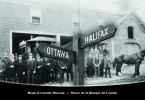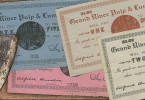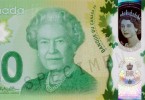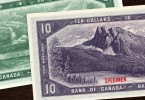What would you ask a curator?
So waddaya wanna know—what have you always wanted to ask a curator?
“What’s your most valuable artifact?” “What’s the smallest piece in your collection?” At the very least, many people out there might like to know just what it is that a curator does. Well, that’s a tricky one: they do as many different things as there are museums, so best to ask one yourself.
And your chance to do just that was September 12. That’s the day the annual Twitter event #AskACurator Day took place on computers, tablets and mobile phones all over around the world.
And it really was all around the globe, with more than 1,500 museums from some 50 countries taking part. Canada alone had more than 160 participating museums. We enthusiastically jumped in, with Curator David Bergeron standing by to answer queries. Chief Curator Paul Berry also provided a few answers throughout the day.
This year was quite a success. We got conversations going with curators at the Royal British Columbia Museum, the Canada Science and Technology Museum, the Smithsonian National Museum of American History and the Royal Ontario Museum.
Kicking things off for us was a query from the Bank of England Museum about what our biggest artifact is. Well, that’s easy! That would be our 2-metre-tall, 1,800-kilogram Yap stone from the Micronesian island of the same name. It’s our gatekeeper, standing high up over our reception area.
We put out our own general query, asking about money and art:
#AskACurator : Any museums out there have artworks featuring currency, or made of currency? ??️
— Bank of Canada Museum (@BoCMuseum) September 12, 2018
Does artwork featured on currency count? The Hall of Honour in #CentreBlock, was used as inspiration for the new 10$ bill! #AskACurator pic.twitter.com/MHDhVzvpEG
— House of Commons (@OurCommons) September 12, 2018
I hope this piece from @britishmuseum counts! A beautiful #gold and #garnet #AngloSaxon pendant set with a #solidus coin. It was found in Wilton, #Norfolk in eastern England, and dates to the early seventh century. #AskACurator pic.twitter.com/eRNeQsnw4I
— Sue Brunning (@SueBrunningBM) September 12, 2018
We've got origami pieces made from dollar bills in our collection @amhistorymuseum #artfrommoney pic.twitter.com/MNURuNLdVv
— Hillery York (@yorkh44) September 12, 2018
We had nine museums contribute to that conversation, one of which joined the conversation from Mumbai, India. Also participating was the Canada Science and Technology Museum whom we later engaged with, sharing experiences about recently renovating our museums. Lessons learned by the CSTM: “Always leave money in the remedial budget…” Agreed!
Tweets went off on all sorts of tangents. A homesick Swede working abroad asked to see anything Swedish in our collection. The Smithsonian folks discovered we have more than 4,000 US coins in our collection, and we learned that they have 1,000 of ours! Yap stones, salt and a 10-metre-long coiled strip of fabric made from bird feathers came into that conversation. Field trips to Washington and Ottawa were proposed. One fellow asked the curators if they’ve ever tried to impress a date with their collection. [Our] David Bergeron did: “I once brought a date to our museum to show her how much money I had to manage!” That got a few likes.
Journalist and author Jack El-Hai tweeted:
Which items in your collections tell a jaw-dropping tale that too few people know about? #askacurator
— Jack El-Hai (@Jack_ElHai) September 12, 2018
From our curator David Bergeron: "Here's a counterfeit note from Edwin Johnson of Toronto. His entire family was involved in counterfeiting. In 1880, he was caught passing his own notes in a tavern. Check out the story in 'Memoirs of a Great Detective'!" #AskACurator pic.twitter.com/T5mwKs3l1q
— Bank of Canada Museum (@BoCMuseum) September 12, 2018
That banknote looks convincing to me! Thank you for the story, and I'll look up Murray's book.
— Jack El-Hai (@Jack_ElHai) September 12, 2018
Nobody said it was all going to be about sophisticated museology, but the layers of comment and the unexpected directions the #AskACurator Day tweets took proved how valuable it is for museums to talk with one another, to trade war stories and successes, and to build networks. Can’t wait for next year!
And by the way, the smallest item in our collection is…dust.
Gold dust, that is.
The Museum Blog
Decoding E-Money II
By: Graham Iddon
New Acquisitions
By: David Bergeron
What’s in Your Stocking?
By: Graham Iddon
Money from Space
Royal Canadian Numismatic Association
By: Raewyn Passmore
Merchant scrip from Labrador
By: David Bergeron
The 2015 Commemorative $20 Bank Note Revealed
By: Graham Iddon
The 1954 series: the artwork of Charles F. Comfort
By: David Bergeron








